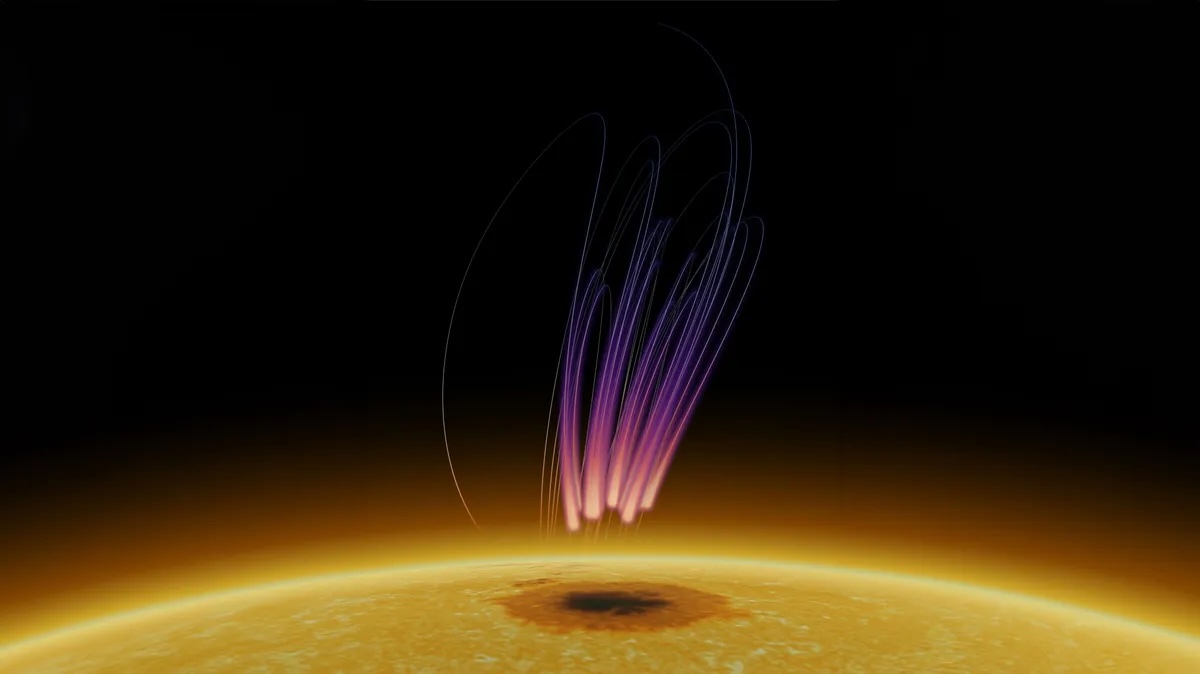
Auroras on Earth occur when storms from our sun engulf our planet — and in a rare cosmic feat last April, our planet returned the favor.The sun’s wind often punches into Earth’s protective magnetic field, or magnetosphere, and forms a bow shock on the sunward side of the field while detouring around our world — not unlike the way waves move when a ship is cutting through water. This is classic solar behavior.On April 24, 2023, however, something peculiar happened. This is when a surge of charged particles blasted from the sun and lit up skies as far south as Arizona and Arkansas as well as parts of Australia and New Zealand. Unconventionally, these particles momentarily switched off our planet’s bow shock, an anomaly that opened up a “two-way highway” through which charged particles also flew from Earth to the sun, where they sparked a solar light show. Compared to the sun’s brightness, however, those auroras were likely far too dim to see.”Particles trapped by Earth’s magnetism suddenly had an escape — a direct path to the sun!” NASA posted last week on social media.The “highway” was created largely due to a plasma-rich component of the solar wind called a coronal mass ejection (CME), which typically travels faster than the speed at which magnetic waves known as Alfvén waves move through plasma. That speed is known as the Alfvén speed.Related: Powerful solar eruption temporarily rips ‘tail’ off Earth’s magnetosphereBut during the April solar eruption, NASA’s Magnetospheric Multiscale spacecraft recorded the latter to be faster, which caused the bow shock to temporarily disappear. It was by Alfvén “wings” that magnetically connected our planet to the portion of the sun that had recently erupted, NASA said.Get the world’s most fascinating discoveries delivered straight to your inbox.The wings are named after Swedish physicist and Nobel laureate Hannes Alfven, who theorized the behavior of auroras and described them to occur due to charged particles from the sun falling into Earth’s atmosphere via its magnetic field lines. He shared the Nobel Prize in physics in 1970 for his work on the nature of electromagnetic waves moving through charged gas, which opened up a field called magnetohydrodynamics.As the solar eruption rushed over our planet, Earth was completely engulfed by the particle cloud. At one point, while surrounded by the storm, a part of Earth’s magnetic “shield” briefly dissipated.(Don’t worry, our thick atmosphere still protects us on Earth!) pic.twitter.com/wR5FeA9p15August 6, 2024The spacecraft’s instruments recorded plasma spewing from our planet into the sun for about two hours, the space agency said in its social media post. “The data revealed unprecedented insights about the sun-Earth connection.”This phenomenon is rare on Earth but common elsewhere in the universe. In our own solar system, similar magnetic highways transport charged particles from Jupiter’s moons Io and Ganymede to the gas giant, where they too have sparked stunning auroras.This research is described in a paper published July 24 in the journal Geophysical Research Letters.Originally posted on Space.com.
